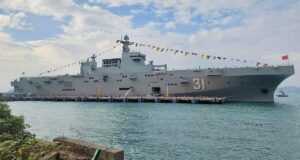By Marc Simms – Junior Fellow
30th June 2014. Security and Defence, Issue 2, No. 6.
Despite a fairly new name, ISIS has a considerable pedigree as a terrorist and insurgent organisation. Before taking its current name in 2013, it was known as the “Islamic State of Iraq”, “Al-Qaeda in Iraq” and “The Organisation for Monotheism and Jihad”, formerly led by Abu Abdullah al-Rashid al-Baghdadi and previously by Abu Musab al-Zarqawi.
Although frequently thought of as an “Al-Qaeda” group, it would be more accurate to note its previous leaders swore loyalty to Al-Qaeda while maintaining a significant amount of autonomy. Since February 2014, ISIS has been disavowed by Al-Qaeda’s leader Ayman al-Zawahiri for refusing to recognise his authority, end their fighting with the al-Nusra Front and not take part in hostilities in Syria.
Nevertheless, ISIS still shares certain core beliefs with Al-Qaeda and is in accordance with many of its aims. In particular, they are hostile to America and its allies, seeing them as preventing the emergence of a pure Islamic state. Additionally, they have inherited the strongly sectarian ideology of al-Zarqawi, declaring Shi’ite Muslims an even greater threat than the USA to the Islamic state.
However, their ideology also differs from Al-Qaeda in two critical ways. ISIS is far more concentrated on territorial gains than Al-Qaeda franchises in other countries. While part of this can be seen as a consequence of their superior resources, they also consciously refer to territorial advances and territorial change in their propaganda. In particular, the abolition of Sykes-Picot has become something of a rallying cry for ISIS supporters.
ISIS are also focused on a larger regional theatre than the Al-Qaeda franchises, as a natural outcome of this territorial focus. ISIS have made significant territorial gains in Syria and Iraq, but they have also planned terrorist attacks in Lebanon and make frequent reference to Yemen, the Arabian Peninsula and Iran as potential “fronts” in their war on Shi’ite Muslims.
Grand aims and pronouncements are nothing new from terrorist and insurgent organisations. The question is whether ISIS has the resources to achieve their stated objectives, in order to accurately assess the threat potential from this group. As surprising as the swift advance in northern Iraq was, it does not represent an adequate baseline for realistic appraisal of their overall capacity.
A better metric for assessment is that of their membership, their alliances, their arms and training and their economic resources.
It is hard to accurately estimate the number of fighters directly under ISIS control. However, as ISIS is the main group making use of foreign fighters in Syria, we can use those figures as a rough outline of their numbers. Estimates from 5000 to 11000 foreign fighters have been put forward, with 7000 being a frequently cited figure. In addition to fighters in Iraq, this suggests a military force of around 10-12,000, though given the reliance on foreign fighters and their usually brief stays of combat, the number is likely to fluctuate and be potentially lower in terms of seasoned, permanent fighters.
ISIS is notable in that it has not established many alliances, instead often displaying a ruthless attitude towards other jihadist groups in Syria that has led frequently to bloody violence.
Nevertheless, in Iraq it appears they have been significantly aided by the Jaysh Rijal al-Tariqah al-Naqshabandia (hereafter JRTN), a Baathist insurgent organisation operating in northern Iraq and with a presence in eastern Syria. It is believed the JRTN has up to 5000 fighters, and though nominally Sufi, its ideology appears to be a mix of Sunni fundamentalism, Iraqi nationalism and Baathism. The JRTN is also notable for its emphasis on the unification of forces opposed to the Iraqi government, including Ansar al-Islam and the 1920 Revolution Brigade.
ISIS has taken part in some notably sophisticated attacks in the past year, which suggest their fighters are well-trained, and have likely gained significant experience from their time in Syria. Their attacks include prison breaks for Abu Ghraib and Taji, which showed that ISIS were capable of operating in Baghdad and taking on significantly difficult targets with both symbolic and practical purposes. In addition to this, ISIS forces frequently target police stations, military checkpoints and assassinate local officials and reporters, in effect crippling local agents of the central government and allowing them to seize control.
They have also shown a significant amount of caution in their overall military planning. After seizing Fallujah, ISIS chose to hold the city rather than take advantage of violent protests in other northern Iraqi cities, some of which they are currently occupying. This strongly suggests ISIS are not being merely opportunistic in their gains, but are taking part in a calculated campaign with carefully chosen targets and a timetable.
Possibly the most worrying aspect of ISIS’s operational potential comes from its unprecedented wealth. According to files seized by Iraqi intelligence before the attack on Mosul, ISIS had £515 million in cash and assets. While it appears the seizure of funds from Mosul may have been initially overstated, it still would have resulted in tens of millions of pounds being taken.
ISIS has achieved this wealth mostly via captured oil facilities in Syria, the sale of rare antiquities seized in the conflict and in levying taxes on individuals and businesses in the regions it controls. In addition to this, it has also been funded by individuals in Kuwait, who appear to be supporting a variety of jihadist groups operating in Syria currently.
In order to support its efforts at securing funding and recruits, ISIS has undertaken a significant and quite sophisticated propaganda and media strategy. ISIS produces viral videos of considerable quality, showing their attacks on various targets and designed to emphasis the ferocious reputation of the group. The group has also set up its own media app, The Dawn of Glad Tidings, which was used to hack Twitter accounts to spread images such as the massacre of Shi’ite Iraqi troops by ISIS after the fall of Mosul.
In addition to this, ISIS also produces “annual reports”, designed to show their efficiency as a group and attract donors seeking to fund violent jihadist causes. Portraying themselves as more active, violent and effective than other groups therefore synergises with their propaganda strategy and suggests they are a better investment than other jihadist groups in terms of value for money.
This sophisticated media campaign is backed by an equally complex strategy of governance. While there has been understandable focus on the harsh realities of life under ISIS rule, including the imposition of strict sharia law and mass killings of Shi’ite Muslims. However, this is bolstered by the provision of social services, Islamic courts and the incorporation of local tribal authorities and amnesties for security forces and local government officials who “atone”. This is a significant departure from their previous governing strategy as the Islamic State of Iraq in the previous decade and further helps bolster their territorial aims and ambitions, by stepping in and providing services previously the state previously offered or neglected to provide.
In conclusion, ISIS have shown considerable sophistication in both their military and their political strategy which, combined with their significant self-generated financial wealth and regional ambitions pose a grave threat to not only Iraq and Syria, but countries bordering those two states as well. So long as ISIS continue to succeed, they will expand and come into greater wealth, further increasing the regional threat they pose.
Marc Simms is contactable at: Marc.Simms@hscentre.org Please cite this article as: Simms, M. (2014). ‘ISIS: Background, Ideology and Capabilities’ Human Security Centre, Defence and Security, Issue 2, No. 6
 Human Security Centre Human Rights and International Security Research
Human Security Centre Human Rights and International Security Research



